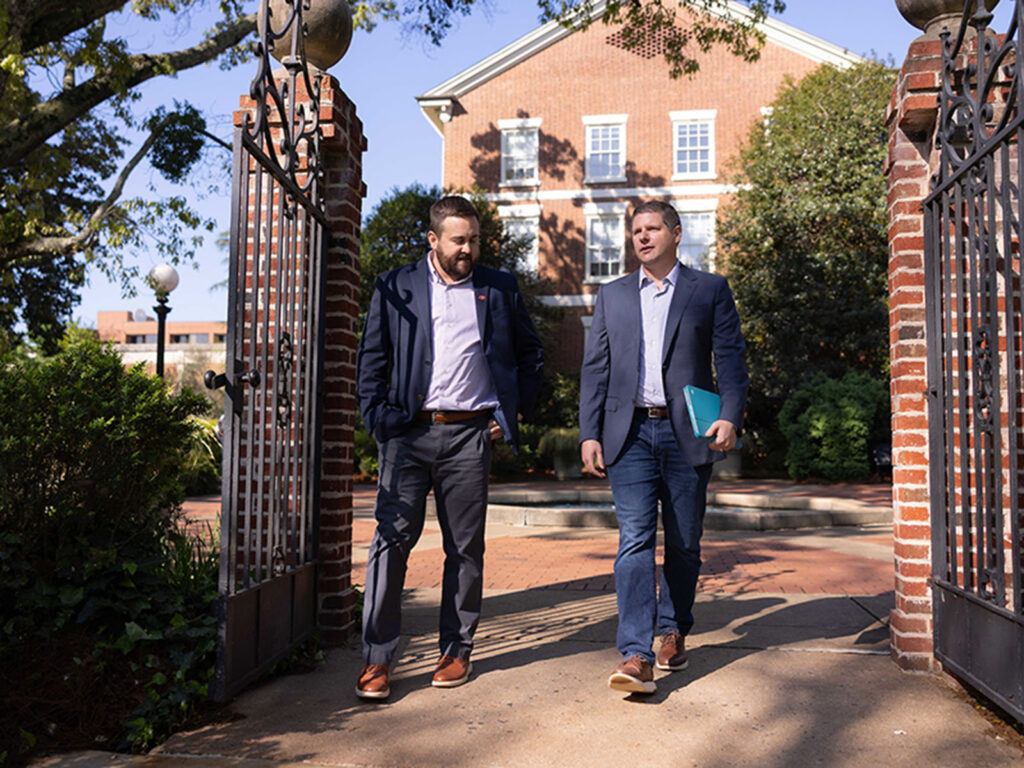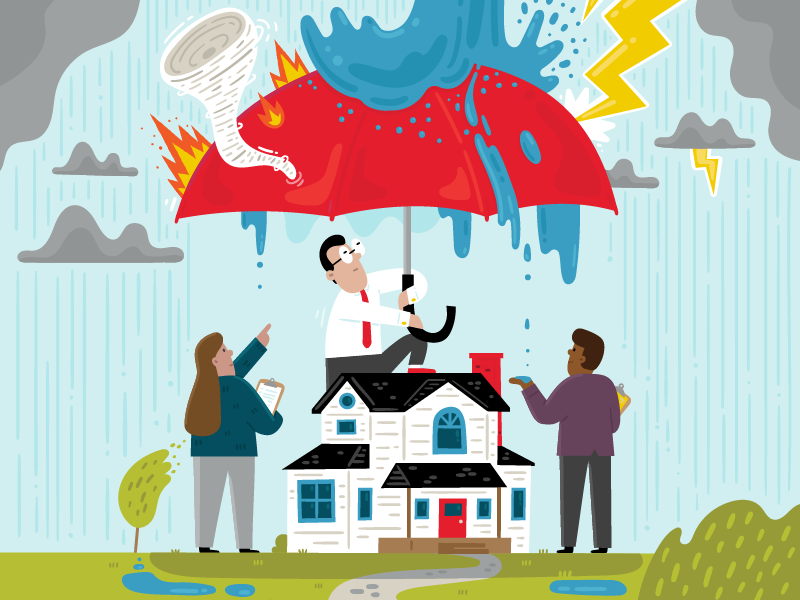The past two decades brought record-breaking weather — and record-breaking costs.
Between 1980 and 2000, the U.S. experienced 90 billion-dollar disasters causing total inflation-adjusted losses of $561 billion to homes and businesses. In contrast, since 2005 there were 286 such disasters totaling $2.2 trillion. More than half of the 25 largest disasters since 1980 happened in the past 10 years.
“The frequency of high-dollar extreme events has increased substantially,” says Marc Ragin, associate professor in the C. Herman Terry Risk Management and Insurance Program. “Part of that is due to climate changes. Part of that is due to people building in high-risk areas. There are many factors. But even in areas not exposed to hurricane or fire risks, we’re seeing a higher incidence of hail or high winds. Risk related to natural disasters, across the board, has increased.”
Property insurers combine the likelihood of disasters with the cost of rebuilding to create pricing structures, but both factors are trending up with no clear end in sight. Without significant change, homeowners won’t be able to afford policies covering their actual risks — assuming insurers even offer them.
Ragin says focusing on high premiums treats the symptoms rather than the disease.
“Insurance companies set prices based on risk, and if risk continues to increase, so will premiums. Installing physical protections can reduce risk, but understanding a community’s needs, educating residents about their options and incentivizing them to act pose significant challenges.”
To address these challenges, Ragin is working to establish partnerships within and outside UGA, including with policymakers, industry leaders, nonprofits and universities.
One proposed partnership is the Center for Innovation in Risk Analysis for Climate Adaptation and Decision-Making (CIRCAD). A research collaboration with Duke University, it involves more than 20 UGA faculty from all over campus, including experts in risk management, engineering, atmospheric science, urban planning, public affairs and anthropology.

The center’s research will be funded by companies that each pay a $75,000 annual membership fee. Company representatives comprise an advisory board, which votes on which projects to fund. This industry-focused approach requires researchers to frame projects around meeting the needs of at-risk industries.
Ragin hopes this approach will make an impact in theory and in practice.
“The funding model will create a research agenda greater than the sum of its parts,” he says. “All these companies have some sort of research division, but they work with limited budgets. … It’s a way to pool and leverage limited budgets and pursue bigger projects than companies might otherwise be able to.”
Several Terry faculty have projects on CIRCAD’s agenda. Ragin is working with Duke environmental policy leaders to explore community-wide insurance pools for wildfire-prone neighborhoods. David Eckles, the Thomas and Kristin Golub Professor in Risk Management and Insurance, plans to study insurance innovations to protect against losses from extreme heat. Rob Hoyt, the Dudley L. Moore Jr. Chair of Insurance, plans to study risk management frameworks for severe weather. Other projects focus on how communities and local governments can incentivize preparedness and risk-aware development.
Ragin says an interdisciplinary approach is necessary to enhance the potential of otherwise siloed research. For example, UGA’s College of Engineering boasts several experts in nature-based solutions — using natural landscapes rather than conventional engineered solutions to mitigate risk.
Matthew Bilskie, assistant professor of engineering and UGA co-director for CIRCAD, uses drones and radar models to predict how tidal and storm surges and rainfall runoff affect coastal areas.
“A lot of my work is understanding how natural landscapes mitigate flooding hazard through new modeling and field-based work,” Bilskie says. “We’ve got a ton of sensors we can deploy. We have a fleet of drones we fly. And that helps understand one aspect. But we’re also looking at other aspects — how we transition from hazard modeling to a dollar amount.”
Dollar amounts help communities evaluate whether to install nature-based solutions. But they also matter to banks and insurance companies. Together, Bilskie and Ragin are working to quantify the costs and benefits of these solutions.
“There are a lot of open questions about how to handle the increase in catastrophic events we’ve seen in the last 20 years,” Bilskie says. “This research will be a first step in answering those questions and motivating action at the scale needed to navigate an uncertain future.”

